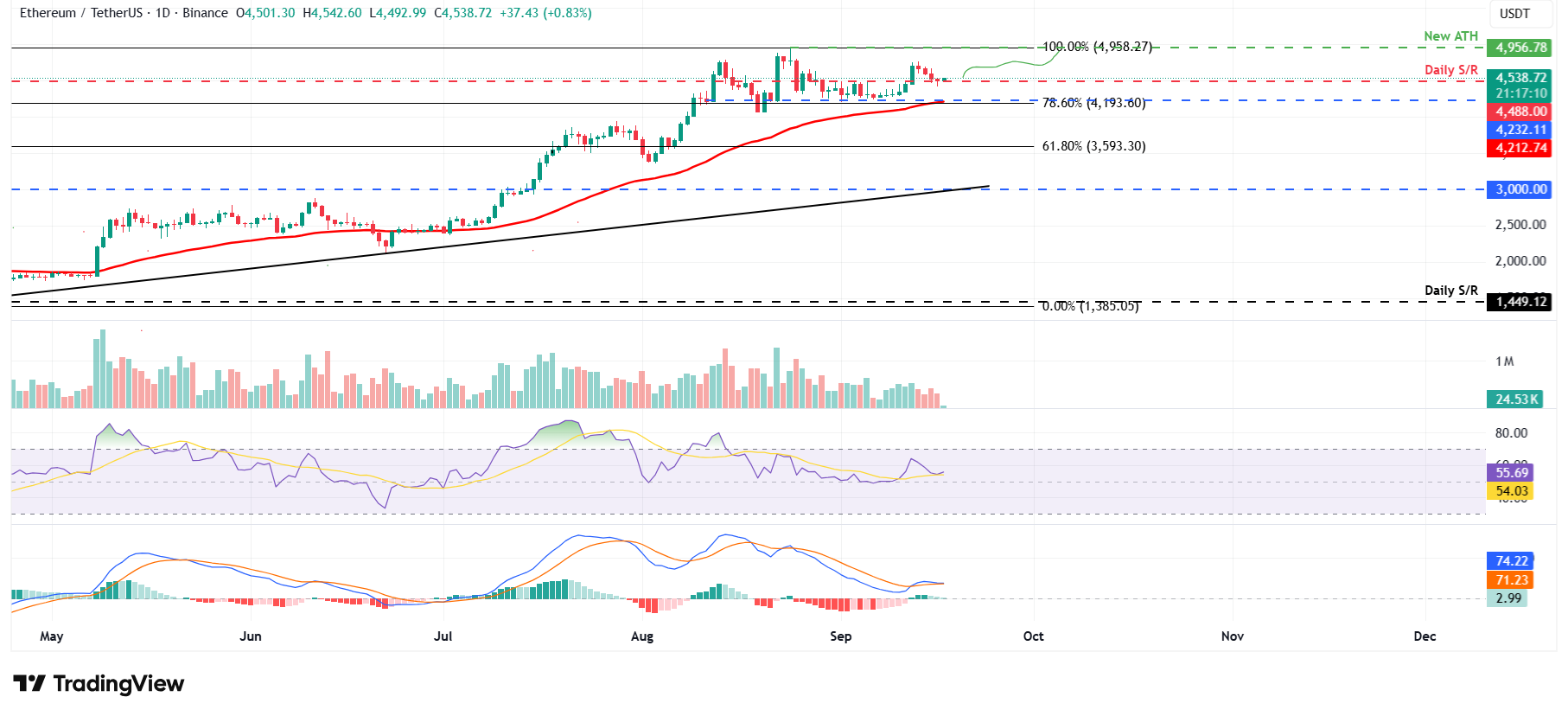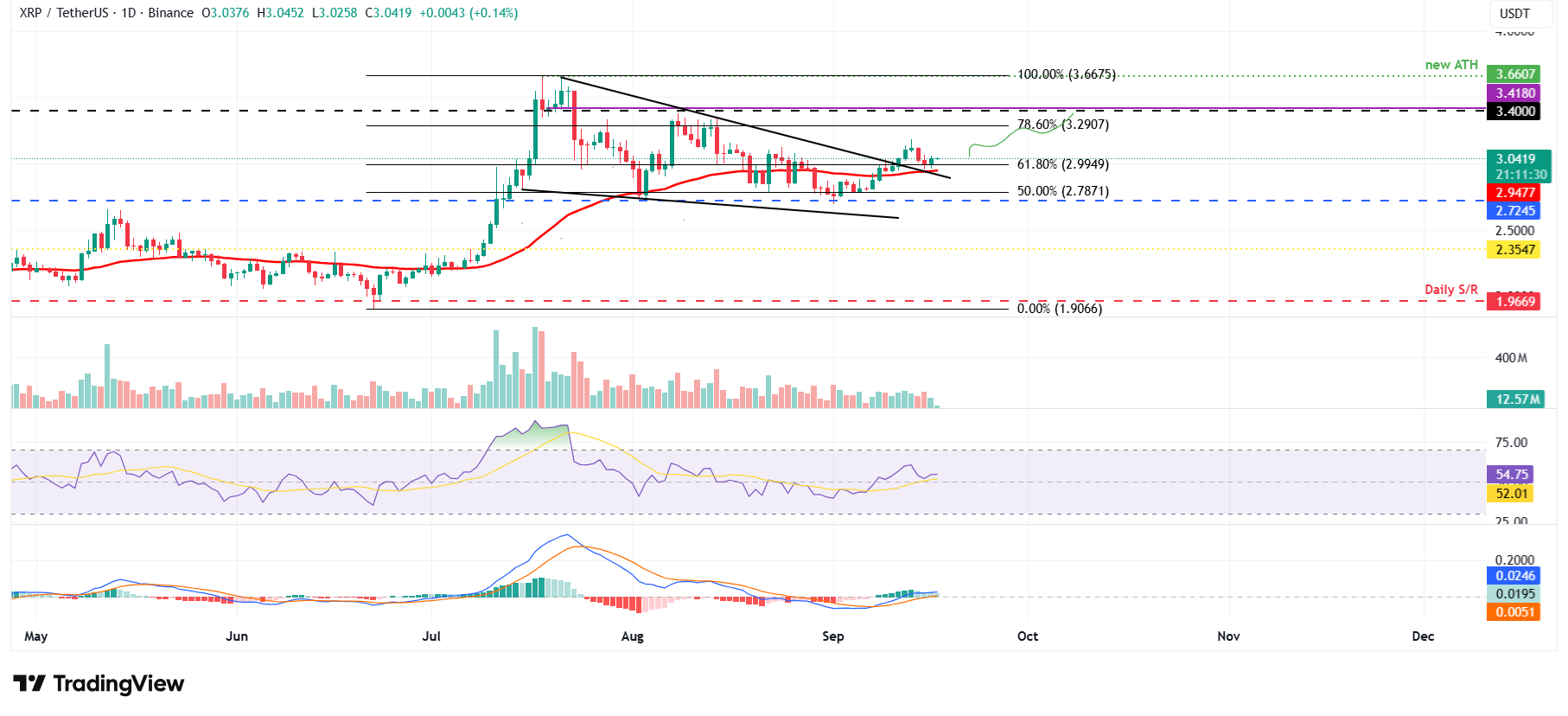Top 3 Price Prediction: Bitcoin, Ethereum, Ripple – Fed rate decision could spark volatility in BTC, ETH, and XRP
- Bitcoin price closes above $116,000 resistance, likely to trigger a fresh bullish leg toward $120,000.
- Ethereum price holds support near $4,488, signaling potential for another rally.
- Ripple price rebounds after retesting a key level, hinting at renewed bullish momentum.
Bitcoin (BTC), Ethereum (ETH), and Ripple (XRP) could face heightened volatility this week as markets brace for the Federal Reserve’s rate decision announcement on Wednesday. BTC is closing above a key resistance level, ETH is holding firm at support, and XRP is rebounding from critical levels as traders await the next decisive move.
Bitcoin bulls aim for $120,000 as it closes above key resistance
Bitcoin price faced resistance around the $116,000 daily level since last Friday and hovered below this level for the next three days. However, on Tuesday, BTC rose and closed above $116,000. At the time of writing on Wednesday, it hovers at around $116,700.
If the $116,000 daily level holds as support, BTC could extend the rally toward its psychological level at $120,000.
The Relative Strength Index (RSI) on the daily chart reads 60, which is above its neutral level of 50, indicating that bullish momentum is gaining traction. The Moving Average Convergence (MACD) indicator on the same chart displayed a bullish crossover on September 6, which remains in effect, indicating sustained bullish momentum and an upward trend ahead.

BTC/USDT daily chart
However, if BTC corrects and closes below the support at $116,000, it could extend the decline toward its 50-day Exponential Moving Average (EMA) at $113,674.
Ethereum recovers after finding support around $4,488
Ethereum price broke above the upper consolidating boundary at $4,488 on Friday and rallied by 5.68%. However, it failed to maintain its upward momentum and declined 3.82% in the next four days, retesting its upper consolidating level at $4,488 on Tuesday. At the time of writing on Wednesday, it trades slightly above this support at $4,538.
If the support at $4,488 continues to hold, ETH could extend the recovery toward its record high at $4,956.
The RSI on the daily chart reads 55, remaining steady above the midline and reflecting slight bullish momentum. However, the MACD lines are converging, indicating indecisiveness among traders.

ETH/USDT daily chart
On the other hand, if ETH closes below the $4,488 level, it could extend the decline toward the lower boundary at $4,232.
XRP descending wedge breakout in play
Ripple price broke above the falling wedge pattern (drawn by connecting multiple highs and lows with two trendlines since mid-July) on September 11; a breakout of this pattern favors the bulls. XRP rallied 2.5% in the next two days. However, it declined by 3.4% until Monday, retesting its breakout point around $2.99, and rebounded slightly the next day. At the time of writing on Wednesday, it hovers around $3.04.
If XRP continues its upward momentum, it could extend the rally toward its daily resistance at $3.40.
The RSI on the daily chart reads 54, above its neutral level of 50, indicating slight bullish momentum. Like Bitcoin, XRP’s MACD indicator also supports the bullish view.

XRP/USDT daily chart
On the other hand, if XRP faces a correction, it could extend the decline toward its 50-day EMA at $2.94.
Cryptocurrency metrics FAQs
The developer or creator of each cryptocurrency decides on the total number of tokens that can be minted or issued. Only a certain number of these assets can be minted by mining, staking or other mechanisms. This is defined by the algorithm of the underlying blockchain technology. On the other hand, circulating supply can also be decreased via actions such as burning tokens, or mistakenly sending assets to addresses of other incompatible blockchains.
Market capitalization is the result of multiplying the circulating supply of a certain asset by the asset’s current market value.
Trading volume refers to the total number of tokens for a specific asset that has been transacted or exchanged between buyers and sellers within set trading hours, for example, 24 hours. It is used to gauge market sentiment, this metric combines all volumes on centralized exchanges and decentralized exchanges. Increasing trading volume often denotes the demand for a certain asset as more people are buying and selling the cryptocurrency.
Funding rates are a concept designed to encourage traders to take positions and ensure perpetual contract prices match spot markets. It defines a mechanism by exchanges to ensure that future prices and index prices periodic payments regularly converge. When the funding rate is positive, the price of the perpetual contract is higher than the mark price. This means traders who are bullish and have opened long positions pay traders who are in short positions. On the other hand, a negative funding rate means perpetual prices are below the mark price, and hence traders with short positions pay traders who have opened long positions.



